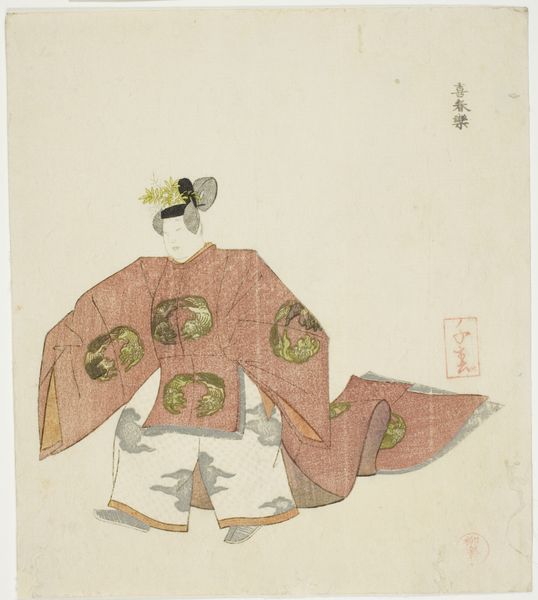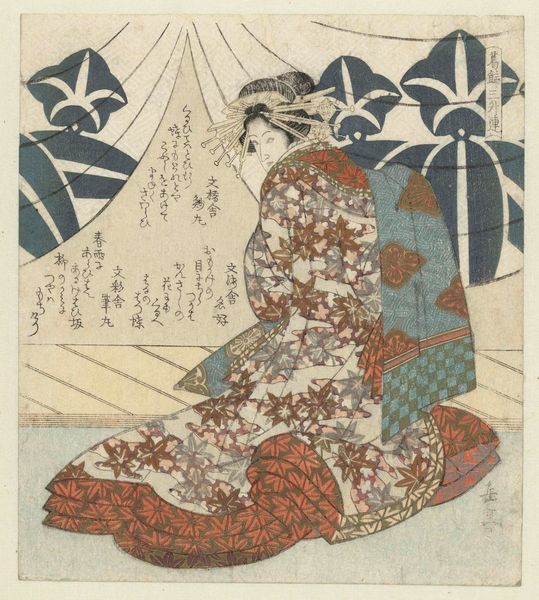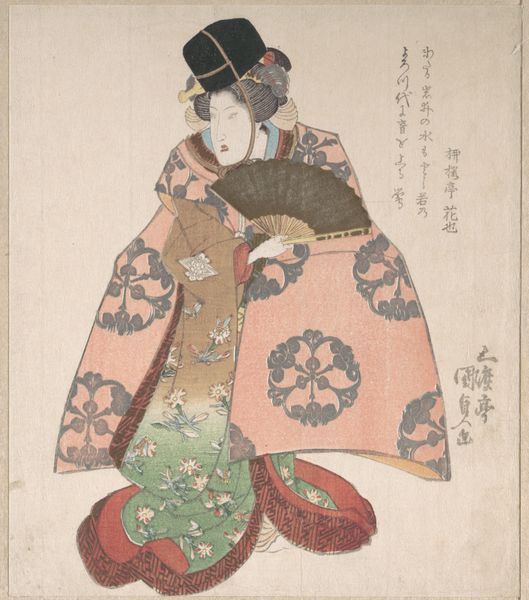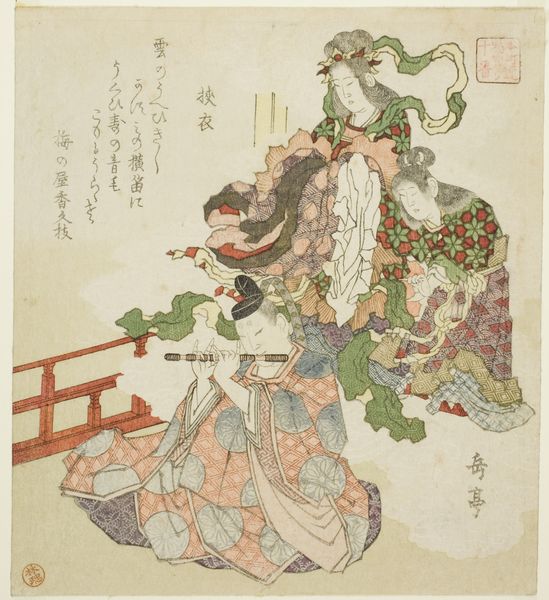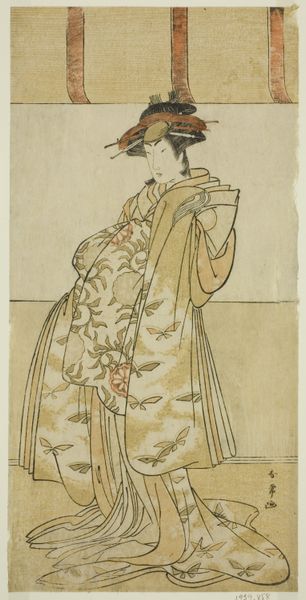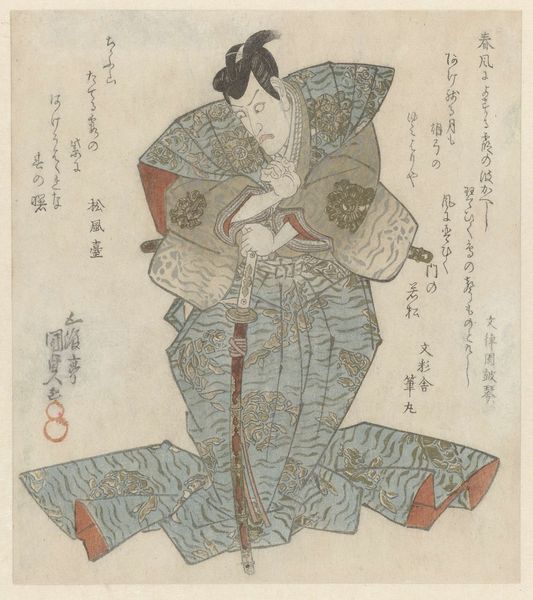
Dancer in Momijigari, from an untitled series of nerimono festival dancers c. 1823
0:00
0:00
drawing, print, woodblock-print
#
portrait
#
drawing
#
water colours
# print
#
asian-art
#
ukiyo-e
#
figuration
#
coloured pencil
#
woodblock-print
#
line
Dimensions: 21.7 × 18.4 cm (8 9/16 × 7 1/4 in.)
Copyright: Public Domain
Editor: This print, "Dancer in Momijigari," by Yanagawa Shigenobu, created around 1823, shows a figure in a beautifully patterned robe. It looks like a woodblock print with delicate colors, and it has a kind of subdued elegance to it. What are your initial thoughts on this piece? Curator: My eye immediately goes to the materiality of the print itself. This isn't just an image, it's a product of labor. Consider the process: the carving of the woodblocks, the layering of the colours, the skilled hands that transferred the image to paper. The variations in ink and line – intentional or not – speak to a mode of production far removed from our digital age. Editor: That's a good point. I hadn't considered the labour so explicitly. The patterns on the robes also draw the eye. Curator: Exactly! The textiles depicted—the complex geometric designs and the maple leaf motifs—are indicators of status and cultural values of the time. Think about the silkworms, the weavers, the dyers – a whole network of production and consumption lies embedded within this single image. This speaks to the culture of materialism. Editor: So, you are seeing this image less as a portrait of a dancer and more as a record of material culture and economic activity? Curator: Not "less," but certainly *also* as that. The dancer embodies a performance of status achieved via layers of crafted garments. The ukiyo-e tradition was fuelled by and reflected the rising merchant class. Ask yourself, who was consuming these images, and what did these representations of luxury and artistry signify to them? The object transcends simply being about art: we need to also consider what art does. Editor: That makes me look at it completely differently, less as a static image and more as an intersection of different kinds of labor and cultural meanings. Curator: Precisely. Examining art through its material production can reveal a wealth of information about a society's values, technologies, and social structures. It’s all there if you consider the materiality.
Comments
No comments
Be the first to comment and join the conversation on the ultimate creative platform.
